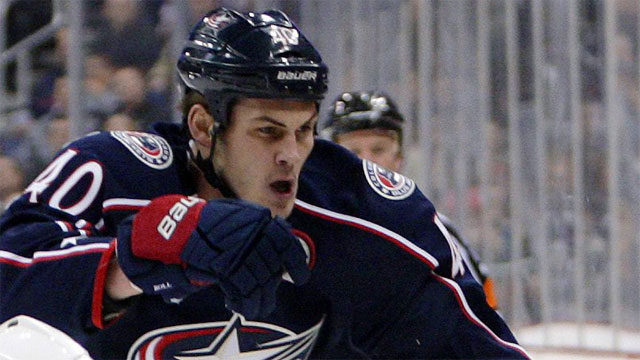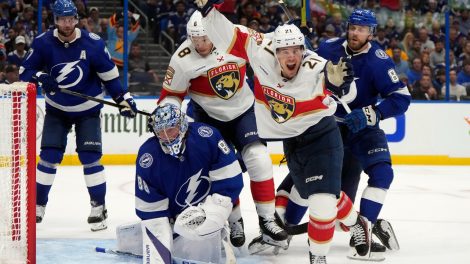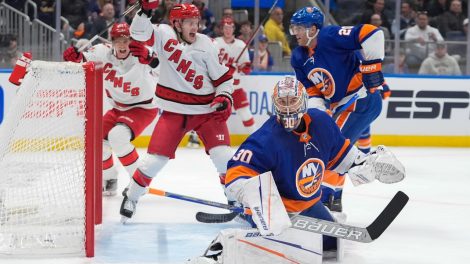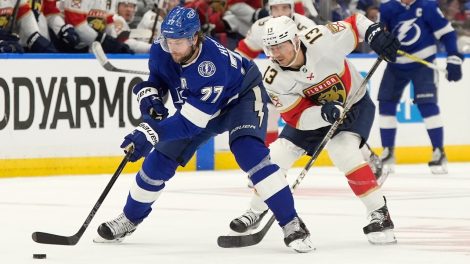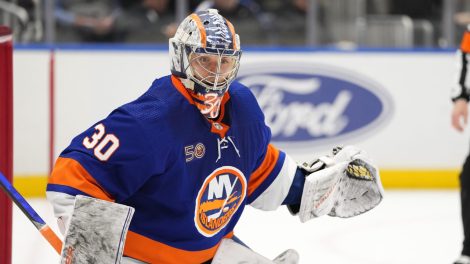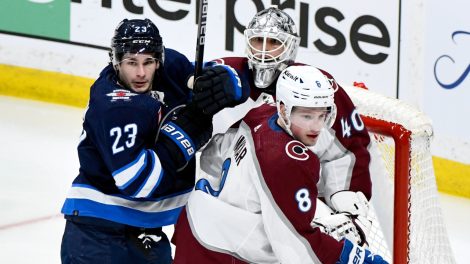TORONTO — Only two NHL players fought more than Jared Boll this season, so when the Columbus Blue Jackets tough guy heard mandatory visors had been approved by the league’s competition committee, he wondered how the decision would change fighting.
"I can see guys maybe starting to take their helmets off more before fights," Boll said Wednesday in a phone interview. "You’ll see a few more of the instigating with a visor calls."
Or maybe not.
Pending final approval from the NHL board of governors, visors will be required for all new players next season and those who have yet to log 26 NHL games. And while that represents a major shift in the players’ stance, visors are far from a clear-cut issue.
Eliminating the rule that makes instigating a fight while wearing a visor an unsportsmanlike conduct penalty could be the beginning of some changes before next season.
"We talked about a lot of those issues: helmets coming off, players pulling helmets off, the two-minute extra penalty on the instigator," said Colin Campbell, the NHL’s executive vice-president and director of hockey operations. "We have to walk through that and make sure we cover everything."
There’s a lot to cover, including what NHLPA executive Mathieu Schneider called putting some "limitations" on visors and making sure more options are available.
With 73 per cent of players already wearing visors and that number set to rise, there will be more emphasis on eye shields moving forward.
"Visors typically are one size fits all and the trainers try to conform them to the helmet," said Schneider, who did not wear a visor during his playing career. "(We’re going to) work with equipment manufacturers to get visors that don’t change the way the helmet fits and to try to get products that allow the players to feel like it’s not a change."
Bauer and Oakley are the leading visor providers for the NHL. Bauer has more than two dozen options that vary in many ways, including size, fit and tint.
"We look forward to working closely with players, coaches and others involved as the NHL moves forward with its decision process," Bauer global communications manager Tory Mazzola said in an email statement. "Our product experts and development engineers are continuously in contact with the league and our NHL athletes to help drive innovation that advances player safety on the ice, including new designs for attaching visors to the helmet, technologies that add comfort and ways to minimize exposure."
Some players, no matter the adjustments, just don’t like visors. Boll had to wear one while playing in Finland during the NHL lockout and "hated it."
There was very little support in an NHLPA survey for making all players wear a visor immediately, and current players will maintain the option.
Like Boll, B.J. Crombeen of the Tampa Bay Lightning chooses not to wear a visor because of how often he drops the gloves.
"The reason I don’t wear a visor is so that you don’t have to take your helmet off when you’re fighting," Crombeen said. "If everyone’s wearing a visor, it’s a lot easier to put a visor on and to still play that same role that I play."
Washington Capitals defenceman Steve Oleksy played 28 games this season as a 27-year-old rookie, just beyond the threshold required to keep the choice not to wear a visor.
"Oh, man. I got lucky," he said.
Oleksy, like other young players such as Zac Rinaldo of the Philadelphia Flyers and Ryan Reaves of the St. Louis Blues, had to wear a visor in the American Hockey League but chose to take it off in the NHL. The instigating-with-visor rule played a major role.
"I would rather play a game with no visor and keep my helmet on for a fight than play with a visor and then have to remove my helmet and everything before a fight," Oleksy said.
Heavyweight enforcers like Colton Orr of the Toronto Maple Leafs and George Parros of the Florida Panthers get to keep their helmets on even if they instigate a fight because they don’t wear visors. While those kinds of players are decreasing in quantity in a salary-cap league, the next generation of fighters will have to deal with visors and their impact.
It’s already a concern now. Oleksy worries about fighting opponents with visors and the danger they present for cuts and other injuries. But going without a helmet altogether can be worse.
"You’re more at risk when you take your helmet off," said Boll, who was third in the league last season with 12 fights. "You see guys all the time falling back and hitting their head on the ice. I think that would be the most dangerous thing."
Once the board of governors formally approves the change as expected, visor use will be the way of the NHL, even for fighters. Boll considered putting on a visor after former teammate Manny Malhotra suffered an eye injury and thought about it again in the wake of Marc Staal taking a puck to the eye. He’ll consider it more over the summer.
Oleksy and Crombeen will see what similar players around the league do before ultimately deciding. An even playing field is important to the fighters’ code.
"If you’re seeing a lot of guys that are wearing visors and still playing that role, then you most likely will put one on," Crombeen said. "It will probably be something that you assess as you go along."
It’s the same from the NHL and NHLPA’s perspective. A subcommittee that will study equipment could include input from trainers, and that might lead to even more discussion and debate.
"There’s probably some questions we hadn’t even thought of yet," Campbell said.

